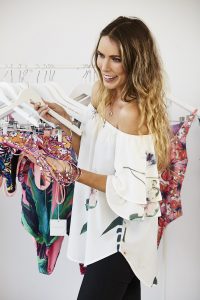How a beach-loving couple turned their passion into a global swimwear company by taking the reins on their brand’s graphic design to cut costs.
Four years ago Dani Atkins, founder of Kulani Kinis, was a peri-natal psychologist with seven years’ experience on her CV.
Atkins’ annual trips to Hawaii to escape the stress of her high-pressure job sparked the lightbulb moment for her brand – prompting her to do a full 360 on her career.
She wanted beautifully designed bikinis at an affordable price – something that was hard to come by – and Atkins knew other women were grappling with the same dilemma.
“I’d bought some swimwear online before our holiday, and had spent $500 for a handful of pieces,” Atkins said.
It was this moment that prompted her and her partner to launch their own low-cost online swimwear line, determined to make ripples in the industry by giving consumers a product that was irresistible – both in price and design.

After finding a manufacturer in China and finalising her own swimwear designs, all while holding down a full-time job, Atkins started thinking about how to design marketing collateral at a low cost.
After some research, she came across Canva, an online graphic design tool that takes the pain out of graphic design by letting users design everything from business cards to posters and swing tags using existing templates and designs.
Atkins used the tool in her spare time to design the marketing material for the brand, helping her to keep costs low – and sell products at a lower price.
“I didn’t have much time on my hands for video tutorials or night-time training courses. Using the templates in Canva’s library as the framework for my own ideas saved me a lot of time and money,” she said.
“Our first [retail] event was a showcase of small start-up brands. We needed posters, signage, and catalogues. We’d never done anything like this before, but again, I just dove into Canva.”
Within just 12 months, the company’s bikinis were earning them a turnover of $250,000.
In February 2015, the pair moved to create their own website using Shopify, designing all of their photos with Canva so that the website had a consistent look and feel.
Within just a few months, the company had launched their first brick-and-mortar store by attending trade shows.
“Our first event was a showcase of small start up brands, and we had an opportunity to set up a little stall, so we needed posters, signage, catalogues, and we needed to have a little runway. We were freaking out a little! We’d never done anything like this, but again, I just dove into Canva.”
The turning point for the brand came when they were picked up by retail giant Forever 21 in mid-2016.
Soon enough, with exposure to 30 million visitors every month, the brand was turning over $1.8 million in their third financial year with a team of just four.
Today, the company’s growth continues to accelerate, with their list of wholesalers including e-commerce giants ASOS, Modcloth and Zumiez.
“The goal just keeps evolving,” says Atkins.

